2023 Audi RS 3 Road Test: Four-season performance car hero

The 2023 Audi RS 3 is a four-season performance car hero, but you probably already knew that. Nevertheless, cars like the RS 3 deserve to be treasured. Audi has made it pretty clear that the path forward is electric, which is a tough pill to swallow after firing up the turbocharged five-cylinder of this brilliant sedan.
You really do buy the RS 3 for its engine, too. In a world where every performance vehicle is quick enough to pin you to the seat, it’s the unique, ripping, chainsaw yowl coming from the boosted 2.5-liter that sets the RS 3 apart. There’s no mistaking it for a V- or inline-six, nor will you presume a four-cylinder is under the hood. Its rhythmic thumping up and down the rev range plays a noise all its own, and it’s sure to keep you entertained for as long as you drive it — the 401 horsepower and 369 pound-feet of torque don’t hurt either. No electric soundtrack pumped through speakers will be able to replicate the total experience of this engine, at least not with today’s technology.
Of course, this beautiful racket the RS 3 is making isn’t for nothing. Audi promises a 3.6-second 0-60 mph time using its shockingly aggressive launch control start. The little sedan won’t quit until you reach 180 mph, assuming you spec the $5,500 carbon ceramic brake option. Those numbers are stupendous, but going quickly in a straight line has never been a weak point of the RS 3’s. Handling hasn’t been a problem in past generations, either, but its all-wheel-drive setup always shone brighter in poor weather than on dry pavement. The new Golf R faced a similar conundrum, but just like its MQB platform mate, the 2023 RS 3 has a trick up its sleeve to make it much more fun to drive no matter the conditions.
We’re talking about a new torque-vectoring rear differential that Audi calls the “RS Torque Splitter” (VW calls it R-Performance Torque Vectoring). As much as 50% of the engine’s torque can be sent rearward, but then the new differential can distribute up to 100% of said torque to either rear wheel. This allows for the unique “RS Torque Rear” drive mode, which is essentially designed to facilitate drifting (VW is less coy and just calls it “Drift mode”). As we quickly learned in the snowy week of our loan, it’s hardly necessary, but it sure does make it more fun. Plenty of RWD or AWD vehicles will throw the tail out in the snow, but few make the experience as approachable as the RS 3. The stability control modes are seemingly tuned with enthusiasts in mind, allowing for the slip angle you want without cutting in prematurely. Just unwind the wheel whenever you want, and the RS3 will rocket forward and out of a slide. It’s almost too easy. If you’re looking for a one-car solution that is a spicy meatball no matter the weather, the RS 3 is a perfect fit.
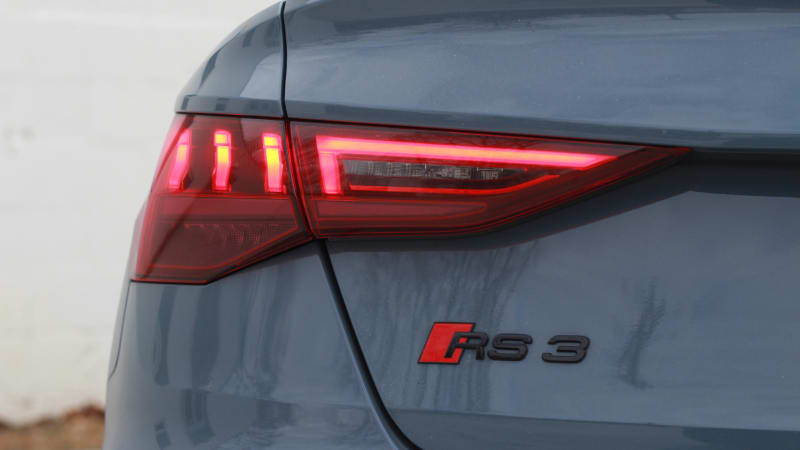
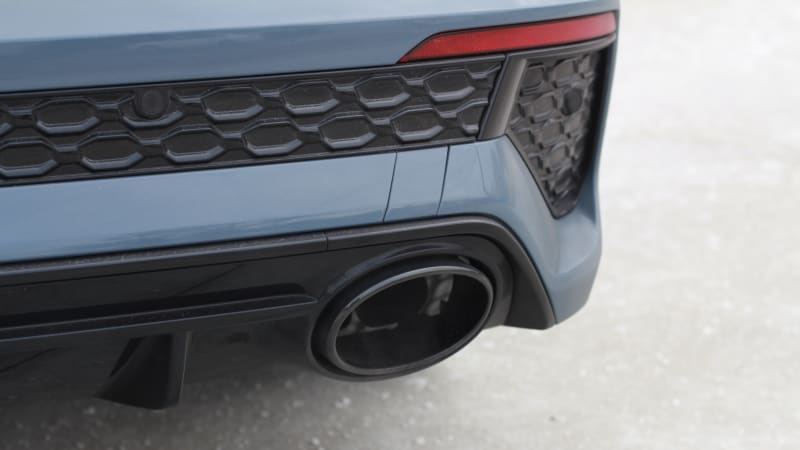
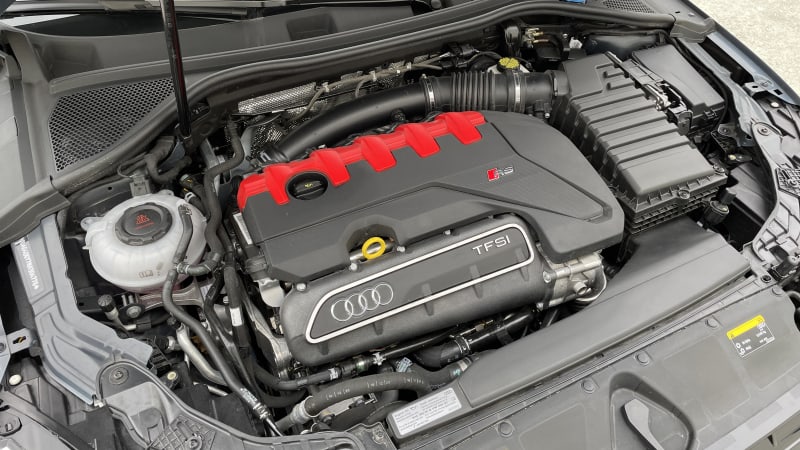
The RS 3’s rear-happy vibes can continue on dry pavement, where you can set the car up to be either neutral or a little mischievous based on the mode setting. You can be slung through a corner without under- or oversteer, or you can keep it in Dynamic mode to get the little tail-wag one might expect from a rear-drive car. No matter the setting, the RS 3’s suspension exhibits a little give and roll as you bend back and forth. Audi uses its Dynamic Chassis Control (DCC) dampers to offer continuous and individual adjustment of each damper based on road conditions and mode selection. It’s not racetrack-stiff in any setting, which is customary for Audi, but that also makes it a little more forgiving on poor road surfaces. Unlike many high-performance cars, though, the RS 3 is one you can run in its most aggressive settings on the street and it still be entirely acceptable.
Where the RS 3 could use some further improvement is its steering feel and weighting. There’s a disconnect between what’s going on at the front wheels and what gets transmitted back to the driver’s hands, and it’s mostly the result of a general numbness to the rack. The steering effort itself is weighty enough, but its tuning in corners as you build up Gs has little correspondence to the remaining grip of its screaming tires, leading to that numb disconnectedness. It was a little disappointing, as we thought Audi steering may have started to turn a corner with the more feel-some RS 6 Avant. Now, there is a caveat and potential explanation to the above: our test car was fitted with winter rubber (235-section-width on all four corners). Perhaps the staggered summer tires — wider in front than in rear — that come standard could transform its steering into a more natural experience. We’ll report back once we’ve had a chance to drive it out in California on the standard rubber.
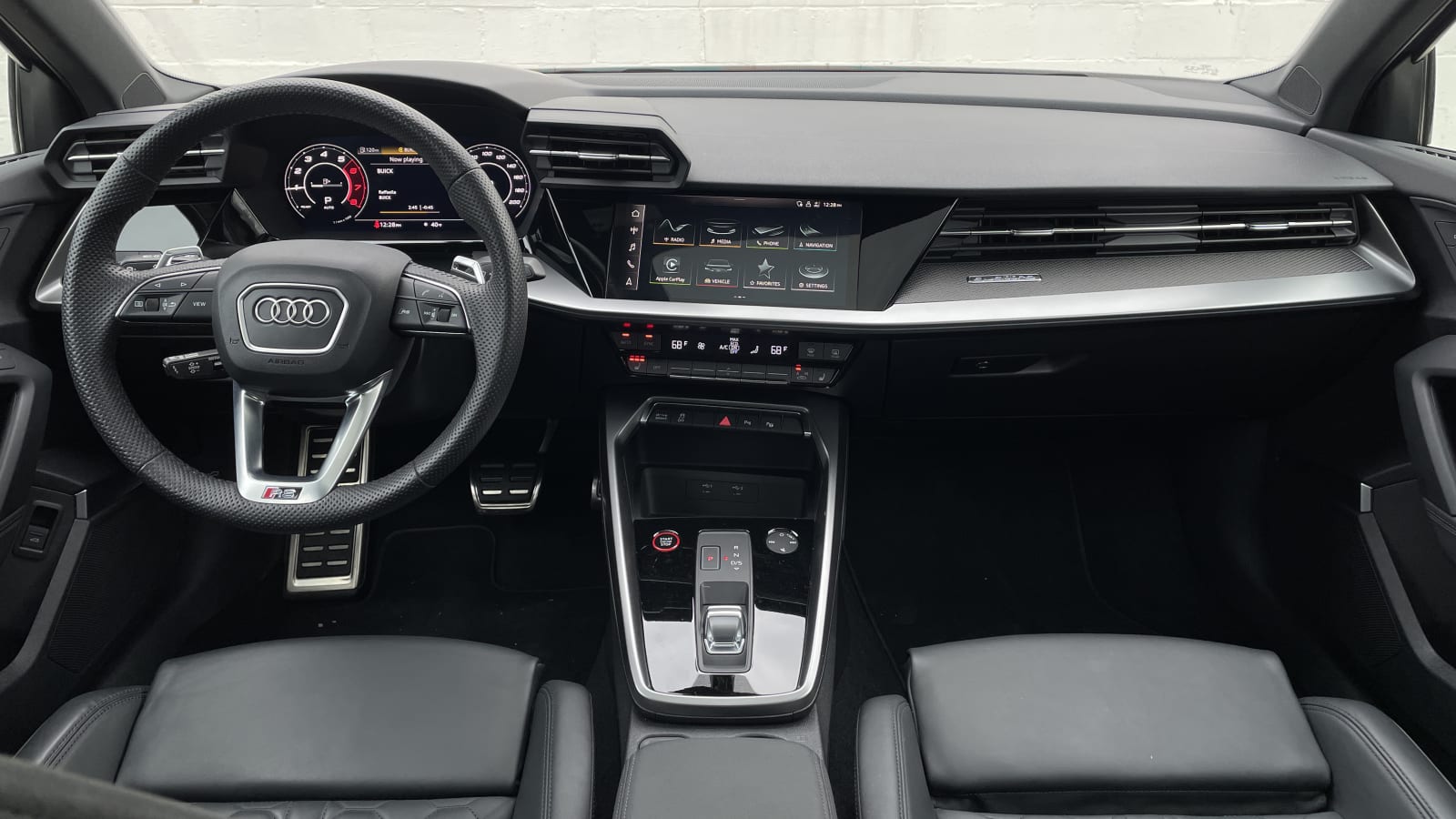
Despite the high-performance slant, the RS 3 gets full points for being daily-driver-friendly. Its ride is a little more flinty than what you’ll experience in an A3 or S3, but at no point does it become uncomfortable. The seven-speed dual-clutch automatic that rips off super-quick shifts in Dynamic mode is smooth and cossetting when left to its own devices. Plus, you can even tone the exhaust noise down if you’d rather just waft along in typical Audi quietness on the highway. That said, hardly a moment was spent with the valved sport exhaust system in any mode outside of the loudest setting. This car sounds too good to drive around in any other fashion.
Where Audi could’ve amped up the drama is the cabin. Having driven an S3 shortly before hopping into the RS 3, there isn’t much to separate the two. You can step into the options portal and bathe the interior in some wild Micromatta Green accents to level up the sportiness, but the subtle RS badging sprinkled about as standard doesn’t do a lot to make this interior feel premium or special. Much of the problem lies in Audi’s new direction for the standard A3 interior, too. While it may have gone full Blade Runner with sharp angles all over, the materials quality is notably down, a trend that originated with the current-generation A4 and Q5. The A3 family is finally catching up. At the very least, many of the vitals for a performance car are present, such as nicely-bolstered seats, easily read customizable gauges, a properly sporty steering wheel and convenient “RS” mode shortcut buttons to quickly swap between preset custom modes.
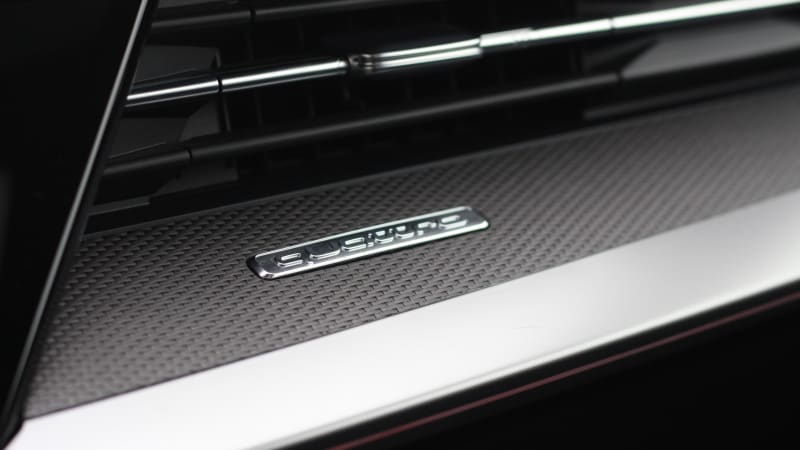
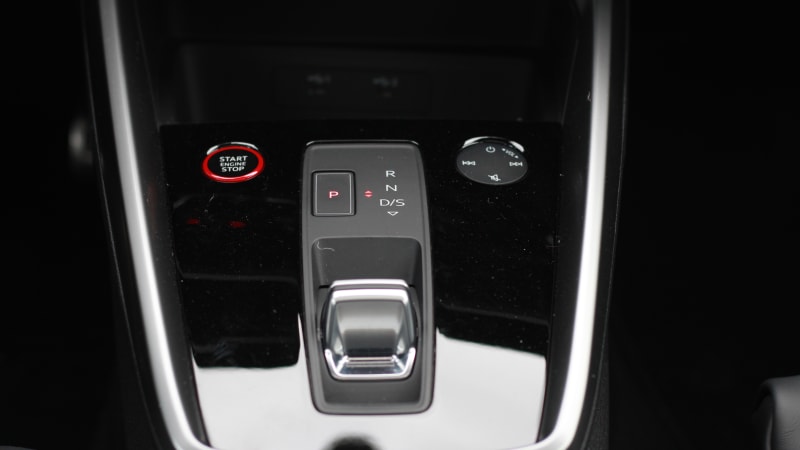
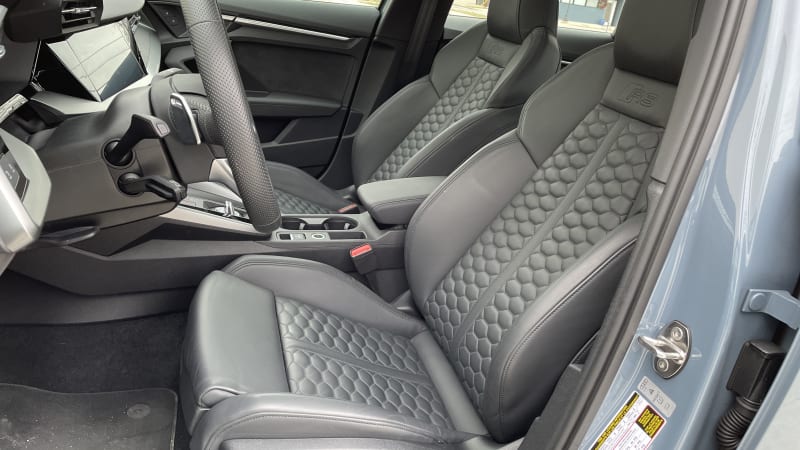

Its underwhelming interior is amplified when you consider the eye-catching exterior styling Audi afforded the RS 3 — this little sedan really looks the part. The flared wheel arches, pixel lights that animate with “RS 3” or a checkered flag, gorgeous wheels and customary RS oval tips all combine to give this sedan a handsome-yet-menacing look. Audi’s color palette is outstanding, too, with options like Kyalami Green, Turbo Blue, Python Yellow and Red Tango Metallic. It’s basically a bag of Skittles. Of course, we’re pretty sure most people will opt for something less vibrant such as the Kemora Gray of our tester. It’s cool in a stealthy sort of way, but it wouldn’t be our first choice for an RS 3.
At $61,995 to start, RS 3 pricing aligns with its German and American counterparts, the Mercedes-AMG CLA 45, and Cadillac CT4-V Blackwing. The rear-wheel-drive Blackwing won’t be an all-year sport sedan, but it sure is more fun to drive than anything at this price point. The CLA 45 offers similar torque-vectoring tech to make it drive less like its front-drive-based roots would suggest, but Audi’s five-cylinder selling point is difficult to argue with. It’s an expensive proposition at $67,090 as tested, but the RS 3 is truly an all-weather, everyday weapon that will leave you with a smile on your face no matter if the road ahead is a snow-covered parking lot or a winding canyon road.
Related video:



